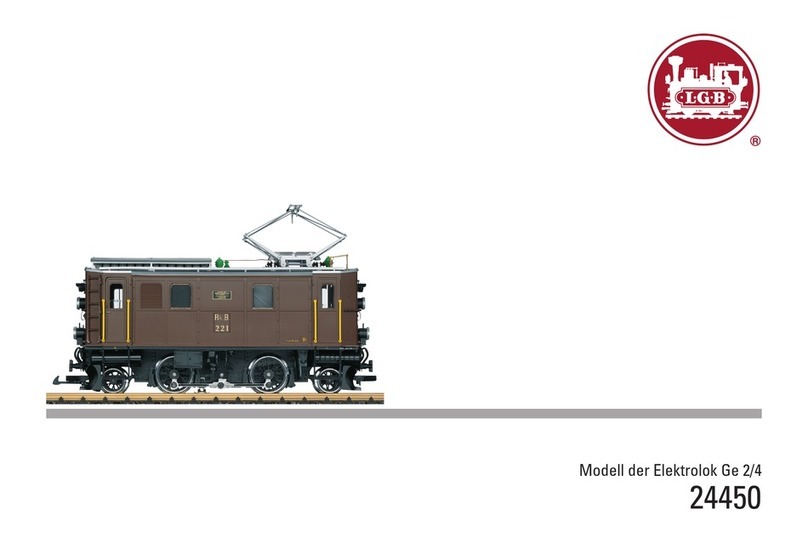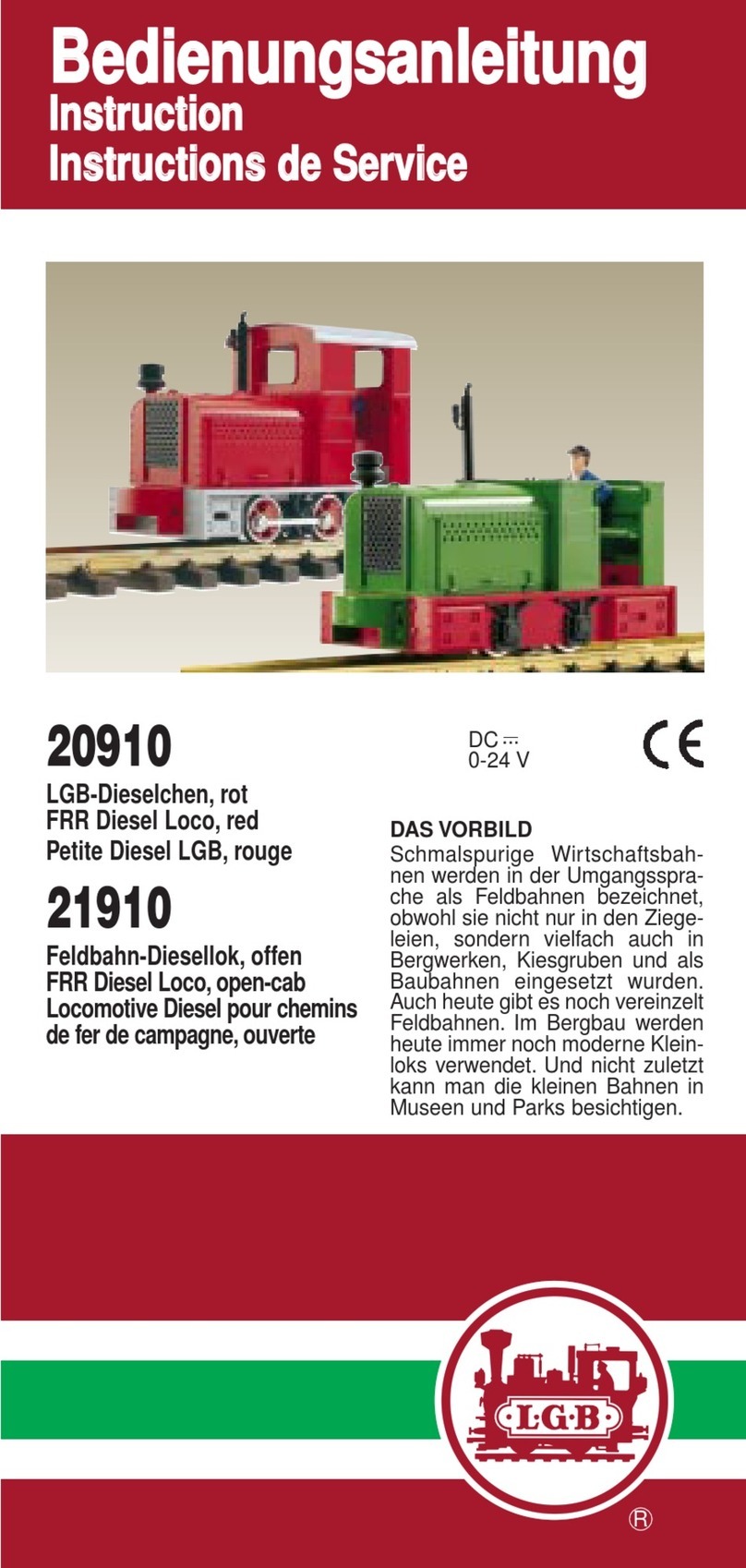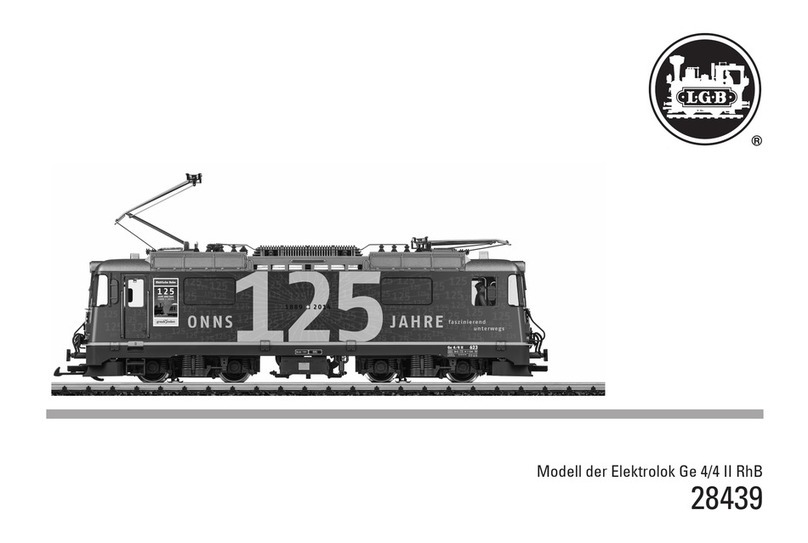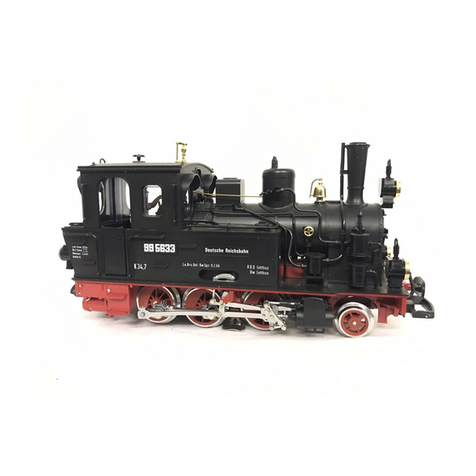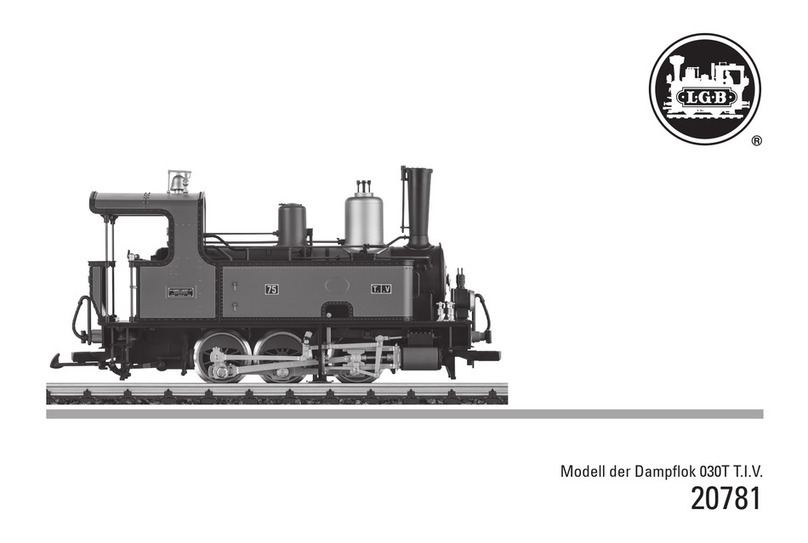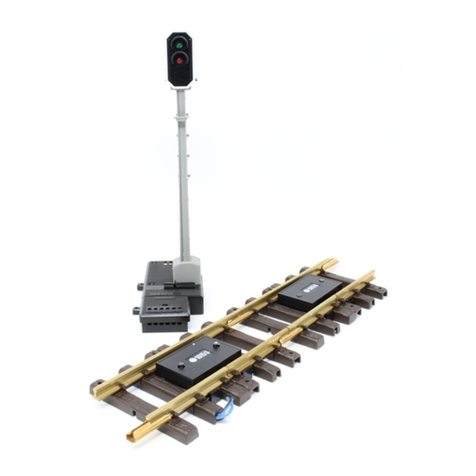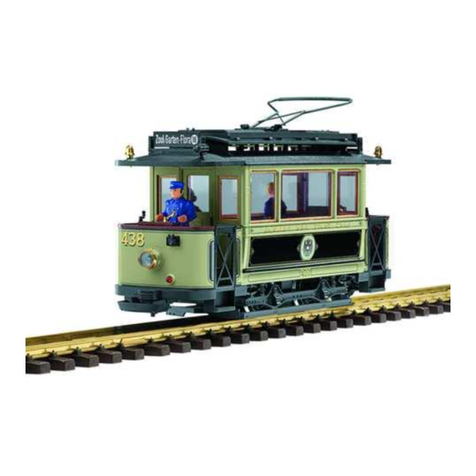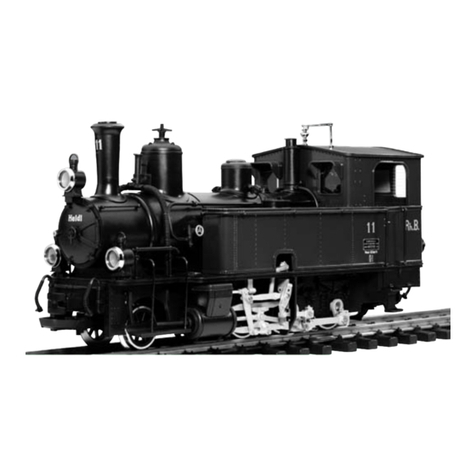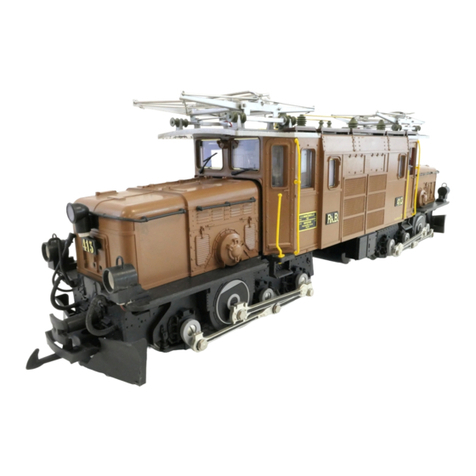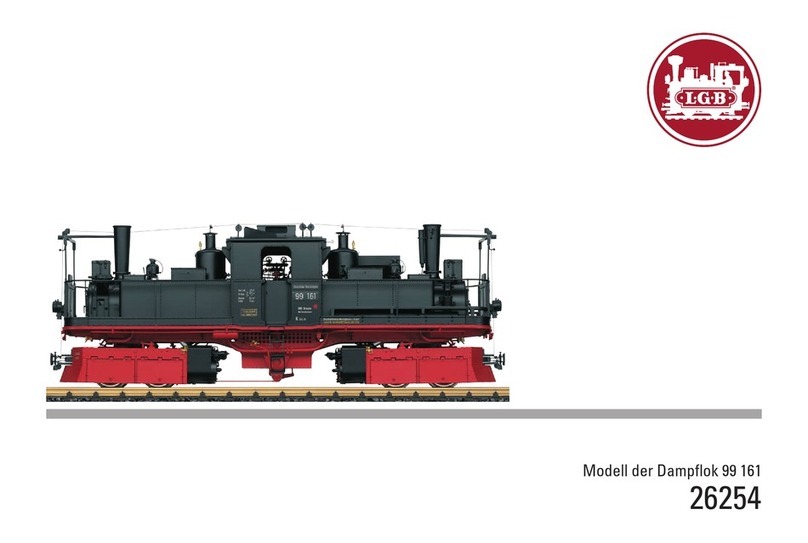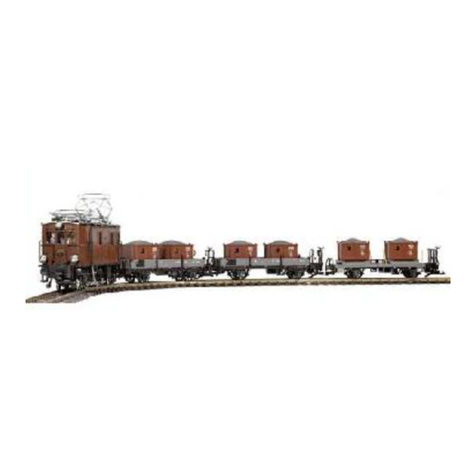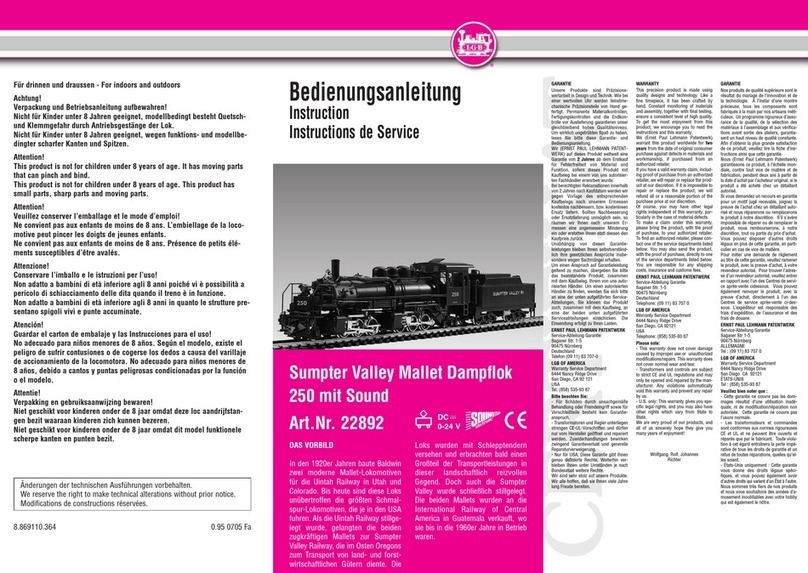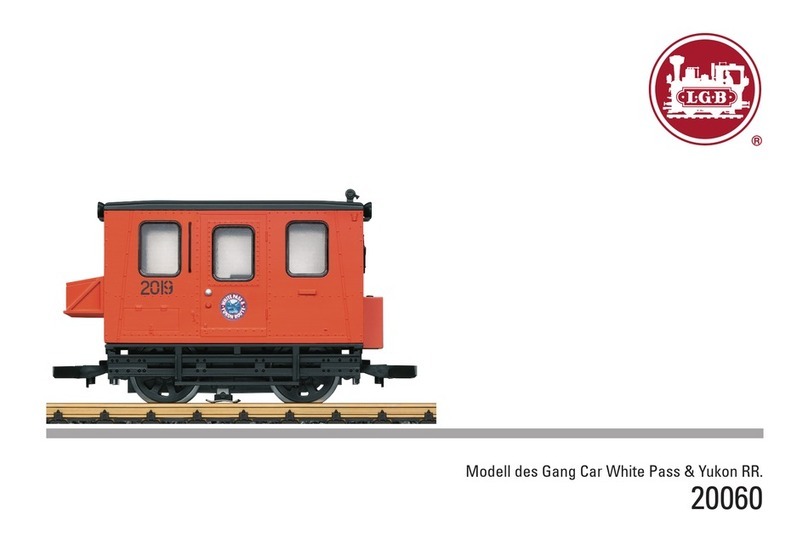
CERTIFIKAT
DC
0-24 V
...
Bedienungsanleitung
Instruction
Instructions de Service
8.869110.342 1.9 1004 PF
GARANTIE
Unsere Produkte sind Präzisions-
wertarbeit in Design und Technik. Wie bei
einer wertvollen Uhr werden feinstme-
chanische Präzisionsteile von Hand ge-
fertigt. Permanente Materialkontrollen,
Fertigungskontrollen und die Endkon-
trolle vor Auslieferung garantieren unser
gleichbleibend hohes Qualitätsniveau.
Um wirklich ungetrübten Spaß zu haben,
lesen Sie bitte diese Garantie- und
Bedienungsanleitung.
Wir (ERNST PAUL LEHMANN PATENT-
WERK) gewähren auf dieses Produkt
weltweit eine Garantie von 2 Jahren ab
dem Erstkauf für Fehlerfreiheit von
Material und Funktion, sofern dieses
Produkt mit Kaufbeleg bei einem von uns
autorisierten Fachhändler erworben
wurde.
BeiberechtigtenReklamationeninnerhalb
von 2 Jahren nach Kaufdatum werden wir
gegen Vorlage des entsprechenden
Kaufbelegs nach unserem Ermessen
kostenlos nachbessern, bzw. kostenlosen
Ersatz liefern. Sollten Nachbesserung
oder Ersatzlieferung unmöglich sein, so
räumen wir Ihnen nach unserem Er-
messen eine angemessene Minderung
ein oder erstatten Ihnen statt dessen den
Kaufpreis zurück.
Unabhängig von diesen Garantie-
leistungen bleiben Ihnen selbstverständ-
lich Ihre gesetzlichen Ansprüche insbe-
sondere wegen Sachmängel erhalten.
Um einen Anspruch auf Garantieleistung
geltend zu machen, übergeben Sie bitte
das beanstandete Produkt, zusammen
mit dem Kaufbeleg, Ihrem von uns auto-
risierten Händler. Um einen autorisierten
Händler zu finden, wenden Sie sich bitte
an eine der unten aufgeführten Service-
Abteilungen. Sie können das Produkt
auch, zusammen mit dem Kaufbeleg, an
eine der beiden unten aufgeführten
Serviceabteilungen einschicken. Die
Einsendung erfolgt zu Ihren Lasten.
ERNST PAUL LEHMANN PATENTWERK
Service-Abteilung Garantie
Saganer Str. 1-5
90475 Nürnberg
Deutschland
Telefon (09 11) 83 707-0
LGB OF AMERICA
Warranty Service Department
6444 Nancy Ridge Drive
San Diego, CA 92 121
USA
Tel: (858) 535-93 87
Bitte beachten Sie:
- Für Schäden durch unsachgemäße
Behandlung oder Fremdeingriff sowie für
Verschleißteile besteht kein Garantie-
anspruch.
- Transformatoren und Regler unterliegen
strengen CE-UL-Vorschriften und dürfen
nur vom Hersteller geöffnet und repariert
werden. Zuwiderhandlungen bewirken
zwingend Garantieverlust und generelle
Reparaturverweigerung.
- Nur für USA: Diese Garantie gibt Ihnen
genau definierte Rechte. Weiterhin ver-
bleiben Ihnen unter Umständen je nach
Bundesstaat weitere Rechte.
Wir sind sehr stolz auf unsere Produkte.
Wir alle hoffen, daß sie Ihnen viele Jahre
lang Freude bereiten.
GARANTIE
Nos produits de qualité supérieure sont le
résultat du mariage de l’innovation et de
la technologie. À l’instar d’une montre
précieuse, tous les composants sont
fabriqués à la main par nos artisans méti-
culeux. Unprogrammerigoureuxd’assu-
rance de la qualité, de la sélection des
matériaux à l’assemblage et aux vérifica-
tions avant sortie des ateliers, garantis-
sent un haut niveau de qualité constante.
Afin d’obtenir la plus grande satisfaction
de ce produit, veuillez lire la fiche d’ins-
tructions ainsi que cette garantie.
Nous (Ernst Paul Lehmann Patentwerk)
garantissons ce produit, à l’échelle mon-
diale, contre tout vice de matière et de
fabrication, pendant deux ans à partir de
ladated’achatparl’acheteuroriginal,sile
produit a été acheté chez un détaillant
autorisé.
Si vous demandez un recours en garantie
pour un motif jugé recevable, joignez la
preuve de l’achat chez un détaillant auto-
risé et nous réparerons ou remplacerons
le produit à notre discrétion. S’il s’avère
impossible de réparer ou de remplacer le
produit, nous rembourserons, à notre
discrétion, tout ou partie du prix d’achat.
Vous pouvez disposer d’autres droits
légaux en plus de cette garantie, en parti-
culier en cas de vice de matière.
Pour initier une demande de règlement
au titre de cette garantie, veuillez ramener
le produit, avec la preuve d’achat, à votre
revendeur autorisé. Pour trouver l’adres-
se d’un revendeur autorisé, veuillez entrer
en rapport avec l’un des Centres de servi-
ce après-vente cidessous. Vous pouvez
également renvoyer le produit, avec la
preuve d’achat, directement à l’un des
Centres de service après-vente ci-des-
sous. L’expéditeur est responsable des
frais d’expédition, de l’assurance et des
frais de douane.
ERNST PAUL LEHMANN PATENTWERK
Service-Abteilung Garantie
Saganer Str 1-5
90475 Nürnberg
ALLEMAGNE
Tel : (09 11) 83 707 0
LGB OF AMERICA
Warranty Service Department
6444 Nancy Ridge Drive
San Diego CA 92121
ÉTATS-UNIS
Tel : (858) 535-93 87
Veuillez bien noter que :
- Cette garantie ne couvre pas les dom-
mages résultat d’une utilisation inadé-
quate, ni de modification/réparation non
autorisée. Cette garantie ne couvre pas
l’usure normale.
- Les transformateurs et commandes
sont conformes aux normes rigoureuses
CE et UL et ne peuvent être ouverts et
réparés que par le fabricant. Toute viola-
tion à cet égard entraînera la perte impé-
rative de tous les droits de garantie et un
refus de toutes réparations, quelles qu’el-
les soient.
- États-Unis uniquement : Cette garantie
vous donne des droits légaux spéci-
fiques, et vous pouvez également avoir
d’autres droits qui varient d’un État à l’autre.
Nous sommes très fiers de nos produits
et nous vous souhaitons des années d’a-
musement inoubliables avec votre hobby
qui est également le nôtre.
WARRANTY
This precision product is made using
quality designs and technology. Like a
fine timepiece, it has been crafted by
hand. Constant monitoring of materials
and assembly, together with final testing,
ensure a consistent level of high quality.
To get the most enjoyment from this
product, we encourage you to read the
instructions and this warranty.
We (Ernst Paul Lehmann Patentwerk)
warrant this product worldwide for two
years from the date of original consumer
purchase against defects in materials and
workmanship, if purchased from an
authorized retailer.
If you have a valid warranty claim, includ-
ing proof of purchase from an authorized
retailer, we will repair or replace the prod-
uct at our discretion. If it is impossible to
repair or replace the product, we will
refund all or a reasonable portion of the
purchase price at our discretion.
Of course, you may have other legal
rights independent of this warranty, par-
ticularly in the case of material defects.
To make a claim under this warranty,
please bring the product, with the proof
of purchase, to your authorized retailer.
To find an authorized retailer, please con-
tact one of the service departments listed
below. You may also send the product,
with the proof of purchase, directly to one
of the service departments listed below.
You are responsible for any shipping
costs, insurance and customs fees.
ERNST PAUL LEHMANN PATENTWERK
Service-Abteilung Garantie
Saganer Str. 1-5
90475 Nürnberg
Deutschland
Telephone: (09 11) 83 707 0
LGB OF AMERICA
Warranty Service Department
6444 Nancy Ridge Drive
San Diego, CA 92121
USA
Telephone: (858) 535-93 87
Please note:
- This warranty does not cover damage
caused by improper use or unauthorized
modifications/repairs. This warranty does
not cover normal wear and tear.
- Transformers and controls are subject
to strict CE and UL regulations and may
only be opened and repaired by the man-
ufacturer. Any violations automatically
void this warranty and prevent any repair
by us.
- U.S. only: This warranty gives you spe-
cific legal rights, and you may also have
other rights which vary from State to
State.
We are very proud of our products, and
all of us sincerely hope they give you
many years of enjoyment!
Wolfgang, Rolf, Johannes
Richter
Änderungen der technischen Ausführungen vorbehalten.
We reserve the right to make technical alterations without prior notice.
Modifications de constructions réservées.
DAS VORBILD
Nachdem die bisher bei den
Schmalspurbahnen Bayerns, Badens
und Württembergs eingesetzten
Dampfloks ihre Leistungsgrenze
erreicht hatten, gab die Deutsche
Reichsbahn 1930 eine schwere
1´E1´- Einheitslokomotive der Bau-
reihe 9922 in Auftrag, um die bis-
herigen Maschinen zu ersetzen. Im
Zuge der Vereinheitlichung der DR-
Dampflokbaureihen wurden zahlrei-
che genormte Bauteile verwendet,
darunter ein leicht veränderter Kessel
der Normalspur-BR 81. Von der ge-
DR-Dampflok 99 7222-5
Art.Nr. 21811
DC
0-24 V
...
DR-Dampflok 99 7222-5, Sound
Art.Nr. 21812
Für drinnen und draussen - For indoors and outdoors
Achtung!
Verpackung und Betriebsanleitung aufbewahren!
Nicht für Kinder unter 8 Jahren geeignet, modellbedingt besteht Quetsch-
und Klemmgefahr durch Antriebsgestänge der Lok.
Nicht für Kinder unter 8 Jahren geeignet, wegen funktions- und modellbe-
dingter scharfer Kanten und Spitzen.
Attention!
This product is not for children under 8 years of age. It has moving parts
that can pinch and bind.
This product is not for children under 8 years of age. This product has
small parts, sharp parts and moving parts.
Attention!
Veuillez conserver l’emballage et le mode d’emploi!
Ne convient pas aux enfants de moins de 8 ans. L’embiellage de la loco-
motive peut pincer les doigts de jeunes enfants.
Ne convient pas aux enfants de moins de 8 ans. Présence de petits élé-
ments susceptibles d’être avalés.
Attenzione!
Conservare l’imballo e le istruzioni per l’uso!
Non adatto a bambini di età inferiore agli 8 anni poiché vi è possibilità a
pericolo di schiacciamento delle dita quando il treno è in funzione.
Non adatto a bambini di età inferiore agli 8 anni in quanto le strutture pre-
sentano spigoli vivi e punte accuminate.
Atención!
Guardar el carton de embalaje y las Instrucciones para el uso!
No adecuado para niños menores de 8 años. Según el modelo, existe el
peligro de sufrir contusiones o de cogerse los dedos a causa del varillaje
de accionamiento de la locomotora. No adecuado para niños menores de
8 años, debido a cantos y puntas peligrosas condicionadas por la función
o el modelo.
Attentie!
Verpakking en gebruiksaanwijzing bewaren!
Niet geschikt voor kinderen onder de 8 jaar omdat deze loc aandrijfstan-
gen bezit waaraan kinderen zich kunnen bezeren.
Niet geschikt voor kinderen onder de 8 jaar omdat dit model funktionele
scherpe kanten en punten bezit.










